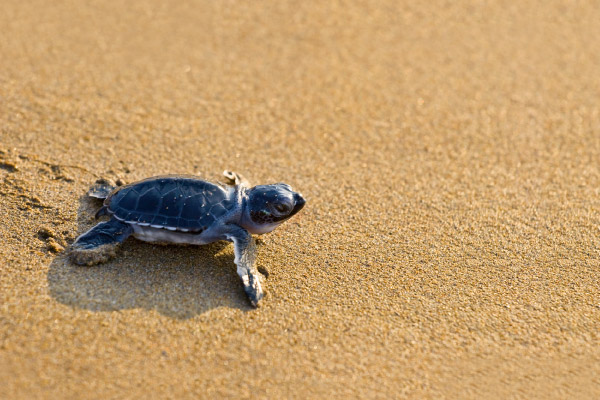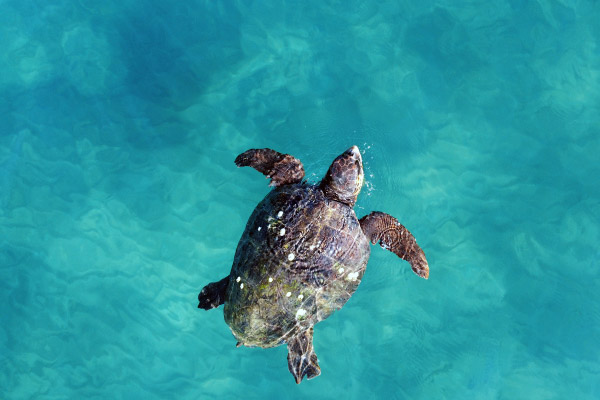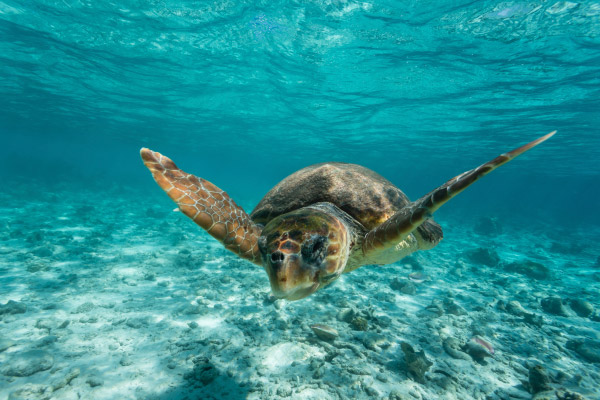LOGGERHEAD
Loggerheads are named for their large heads, jaws powerful enough to crush an adult queen conch. Like most sea turtles, loggerheads are famed for their vast migrations. As a species that may travel thousands of miles across ocean basins, loggerheads are in grave danger due to worldwide habitat loss and incidental capture by fishermen. During their open ocean phase, they feed on a wide variety of floating items. Unfortunately, trash and other debris discarded by humans also tends to accumulate in their habitat. Small fragments of plastic are often mistaken for food and eaten by turtles.



SCIENTIFIC NAME
Caretta caretta
STATUS
Vulnerable
DISTRIBUTION
- Circumglobal
- Nesting areas are in tropical to sub-tropical regions
- Non-nesting range extends to temperate regions
SIZE
ADULT
- Length 2-3.6 Ft
- Weight 440 Pds
HATCHLING
- Length approximately 25 mm
- Mass 15-20 g
DIET
For all life stages, mostly benthic invertebrates (crabs, other crustaceans, and mollusks) and occasionally jellies
REPRODUCTION
- Reproduce every 2-4 years
- Lay 2-5 clutches of eggs per season
- Lay 80-120 eggs per clutch
- Large ping-pong ball size eggs weigh 30-40 grams
- Incubation period approximately 60 days long
- Can take 20-30 years to reach sexual maturity
FACTS
- Loggerheads exhibit trans-oceanic developmental migrations from nesting beaches to immature foraging areas on opposite sides of ocean basins.
- A large juvenile loggerhead named Adelita was the first sea turtle to be tracked by satellite across an entire ocean basin.
- Her approximately 6500 mile journey reached feeding areas off Baja California, Mexico, to coastal areas off her natal Japan corroborated the link across the North Pacific Ocean established by genetic studies.
- In the North Atlantic Ocean, small juveniles feast on mats of Sargassum for years before returning back to nearshore areas off the eastern coast of the United States as large juveniles and adults
LOGGERHEAD TURTLE FACTS
- They are the most widespread sea turtle species in the world.
- You can recognize them by their reddish-brown carapace (upper shell) and yellow underbelly and their strong jaws that they use to crunch through the hard shells of crustaceans and mollusks
- They are a long-lived species and don’t reach sexual maturity until they are 35 years old.

